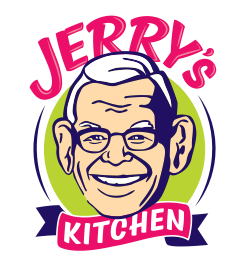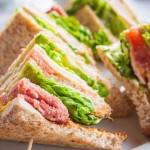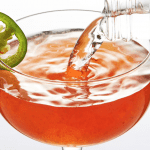Charcuterie 101: Essential French Cured Meats and More
Know your meats…
- Pâté
- A mixture of fat, meat (typically pork), and seasonings that are ground or puréed
- Terrine
- Terrine is short for “pâté en terrine”
- Primarily vegetable-based or seafood-based
- Mousse
- Similar to pâté, but incorporates more liver into the dish, giving the mousse its creamy texture
- Rillettes
- Traditionally made from confit meat and packed into a container
- Typically pork, but duck and rabbit are popular too
- Boudin
- Translates to “pudding”
- Savory sausages of ground and spiced meat that is boiled, poached, or blanched
- Saucisson
- Dry-cured, fermented salami
- Jambon
- Cooked and cured ham

Photograph: Vicky Wasik
Done right, the charcuterie board is an awe-inspiring sight. There are the meats, of course, in a smorgasbord of cuts, cures, and flavors. And then there are the mustard and pickles and crusty baguettes, and the fact that we get to eat it all with our hands. In a world where fine dining typically comes with dainty cutlery and elegant plating, charcuterie speaks to a different, gloriously primal, kind of indulgence.
But what exactly is French charcuterie? How does it differ from, say, the cured meats of Italy, or the bounty of smoked Delikatessen meats made in neighboring Germany? And what do experts consider the most noteworthy items under the charcuterie umbrella?
The word itself comes from the French words chair, meaning “flesh,” andcuit, meaning “cooked.” It first entered the culinary lexicon in the 15th century to represent storefronts specializing in the preparation of pig and offal at a time when shop owners weren’t allowed to sell uncooked pork. These owners, charcutiers, would hang inventory in their shop windows to draw customers in. It worked: The craft was mastered, and a culture was born.
As for how it’s defined today? Elias Cairo, founder and charcutier of Oregon’s Olympia Provisions, puts it simply: “Charcuterie is value-added meat,” he says, “where something is added, be it salt or heat, to enhance flavor and prolong shelf life.” So, really, charcuterie is an exercise in crafty innovation—resulting from a need to preserve the fruits of a day’s hunt. Smoked meats and fish came first. Cured meats came second. Once processed, many products in the charcuterie canon were covered with melted fat, either butter or rendered poultry fat, to maximize stability and prevent spoilage.
Read the full article here.














